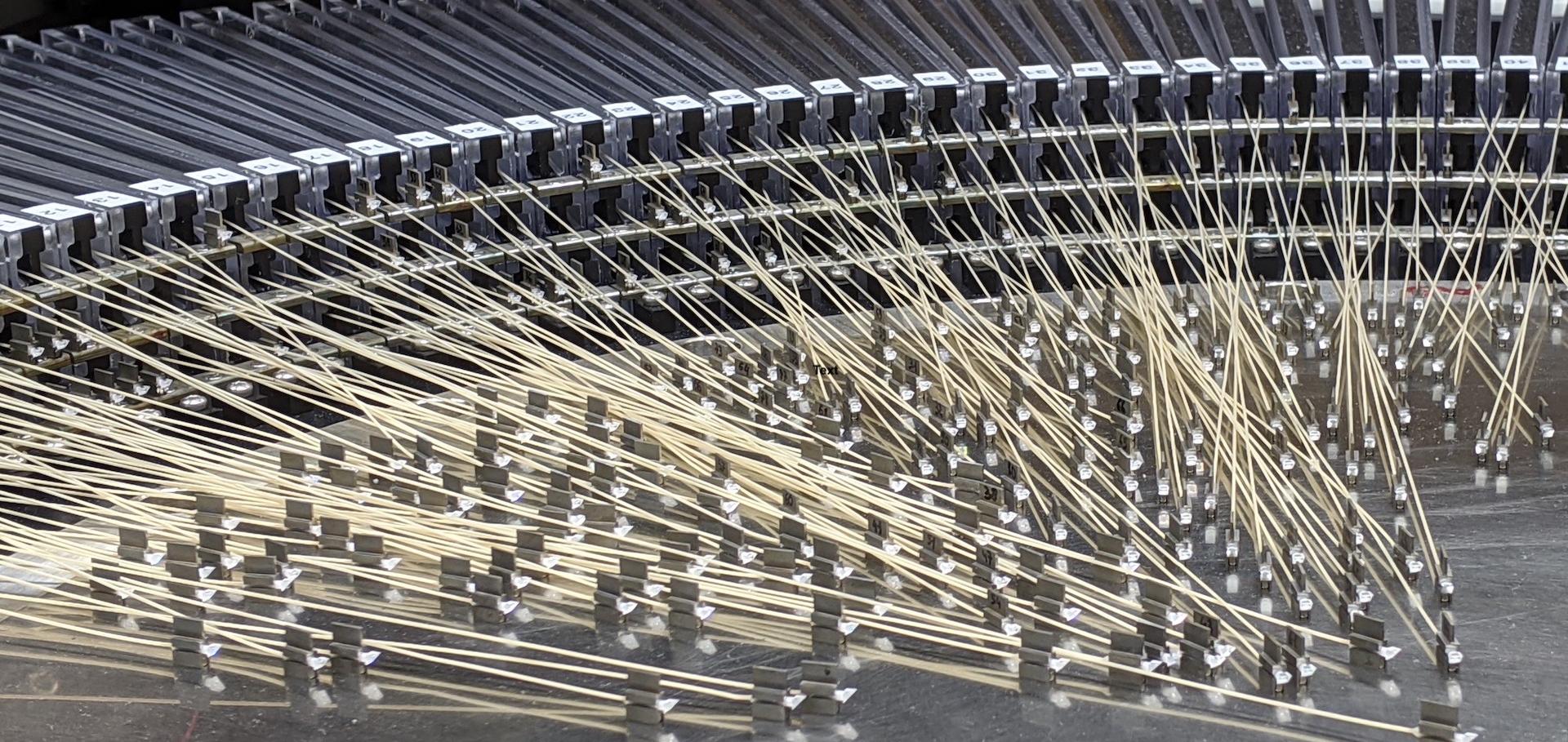Design of the observation queue scheduler for WEAVE on the WHT
Observatory Operations: Strategies, Processes, and Systems VII Society of Photo-Optical Instrumentation Engineers 10704 (2018)
Abstract:
The Observation Queue Scheduler (OQS) for WEAVE is described in this paper, with particular emphasis on the scheduling algorithm. WEAVE is the new 2-deg field of view multi-object (1000 multiplex) spectroscopy facility (R5000 and R20000) at the 4.2-m William Herschel Telescope. The OQS helps to maximize the scientific impact of WEAVE observations by optimising the schedule of the observing blocks, taking into account the science priority, required instrument configuration and observing constraints. On a nightly basis the OQS will assist the observer in creating a flexible queue of suitable observing blocks to be executed. It will be also possible to run a version of the OQS for extended periods of time to provide guidance on the longer-term planning of WEAVE surveys.Product assurance for instrumental projects in research laboratory: galaxies, etoiles, physique, instrumentation (GEPI)
SPIE Astronomical Telescopes + Instrumentation Society of Photo-optical Instrumentation Engineers (2018)
Abstract:
Product Assurance is an essential activity to support the design and construction of complex instruments developed for major scientific programs. The international size of current consortia in astrophysics, the ambitious and challenging developments, make the product assurance issues very important. The objective of this paper is to focus in particular on the application of Product Assurance Activities to a project such as MOSAIC, within an international consortium. The paper will also give a general overview on main product assurance tasks to be implemented during the development from the design study to the validation of the manufacturing, assembly, integration and test (MAIT) process and the delivery of the instrument.The WEAVE observatory control system
Observatory Operations: Strategies, Processes, and Systems VII Society of Photo-Optical Instrumentation Engineers 10704 (2018)
Abstract:
WEAVE is the next-generation spectroscopic facility for the William Herschel Telescope (WHT) 1,2. WEAVE offers multi-object (1000 fibres) and integral-field spectroscopy at two resolutions (R ~ 5000, 20000) over a 2-deg field of view at prime focus and will mainly provide follow up of ground-based (LOFAR) and space-based (GAIA) surveys. The Observatory Control System (OCS) is responsible for providing the software control and feedback framework through which WEAVE will be operated. This paper summarizes the design of the different OCS subsystems and the interfaces between them and other WEAVE components. In the remainder of this paper, Section 2 outlines the other WEAVE systems with which the OCS interacts, Section 3 describes the system architecture, Section 4 comments on system-architecture decisions, Section 5 describes the main components of the OCS, Section 6 outlines the life-cycle of an OCS Observing Block and, finally, Section 7 gives an overview of the OCS testing plan.The WEAVE prime focus Correction: from design to integration
SPIE Astronomical Telescopes + Instrumentation 2018 Society of Photo-optical Instrumentation Engineers (2018)
Abstract:
WEAVE is a new wide-field multi-object spectroscopy (MOS) facility proposed for the prime focus of the 4.2m William Herschel Telescope (WHT), situated on the island of La Palma, Canary Islands, Spain. To allow for the compensation of the effects of temperature-induced and gravity-induced image degradation, the WEAVE prime focus assembly will be translated along the telescope optical axis. The assembly comprises the prime focus corrector (PFC), a central mount for the corrector known as FTS[1], an instrument rotator and a twin-focal-plane fibre positioner. SENER, that manufactured and delivered the FTS, is also responsible for the final design, manufacturing, integration, alignment and testing of the PFC and its ancillary equipment. This manuscript describes the final design of the PFC along with the analyses and simulations performed and presents the procedures for the integration and alignment of the lenses in the corrector.The polishing of WEAVE spectrograph collimator mirror
SPIE Astronomical Telescopes + Instrumentation 2018 Society of Photo-optical Instrumentation Engineers (2018)


